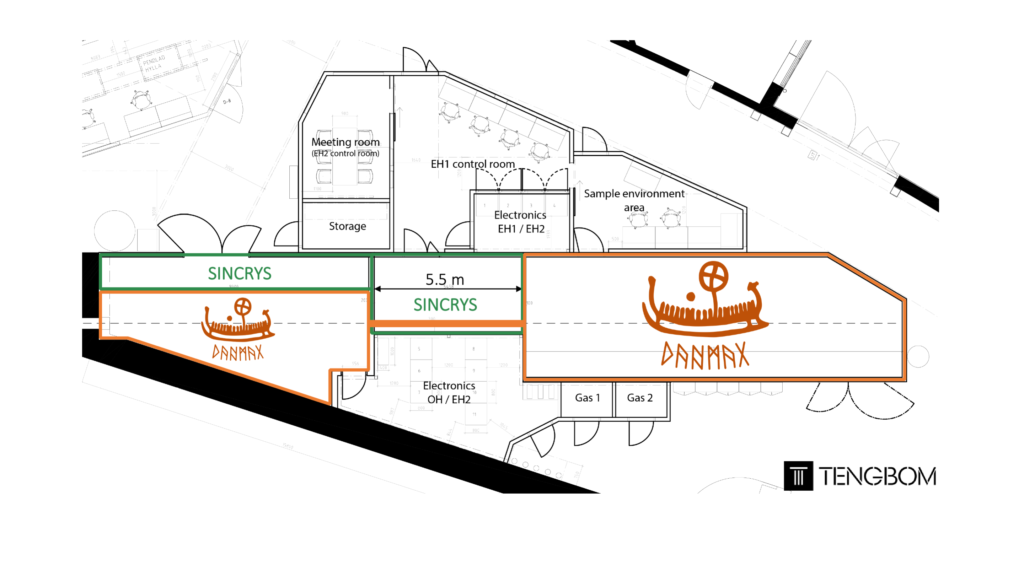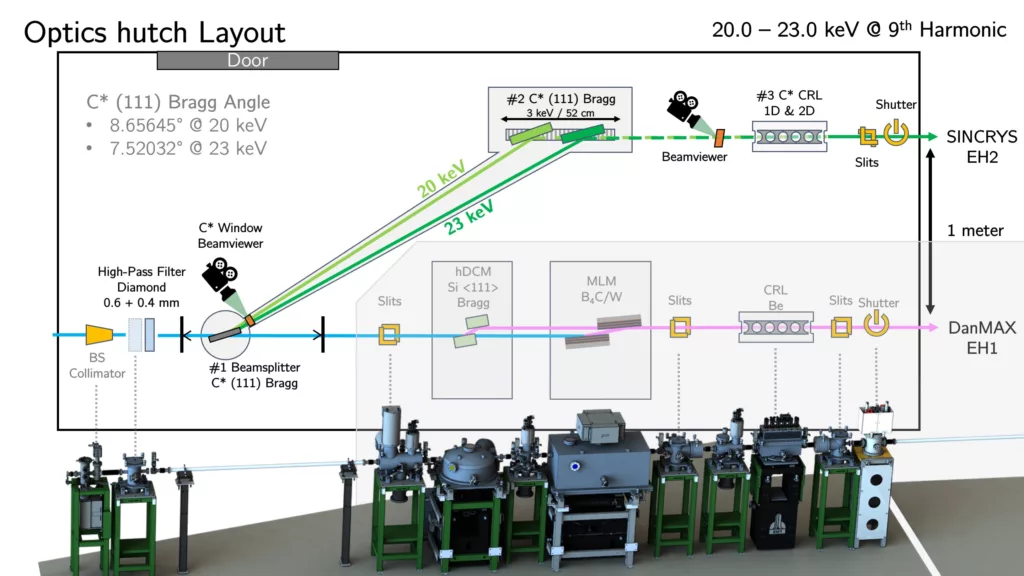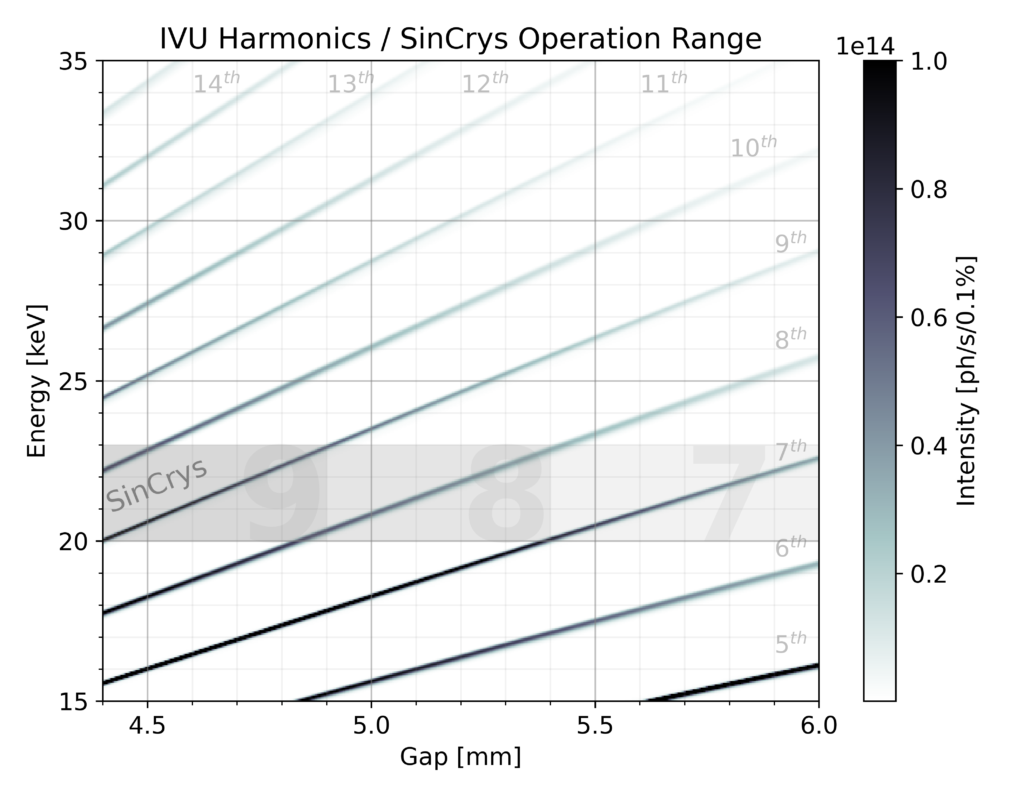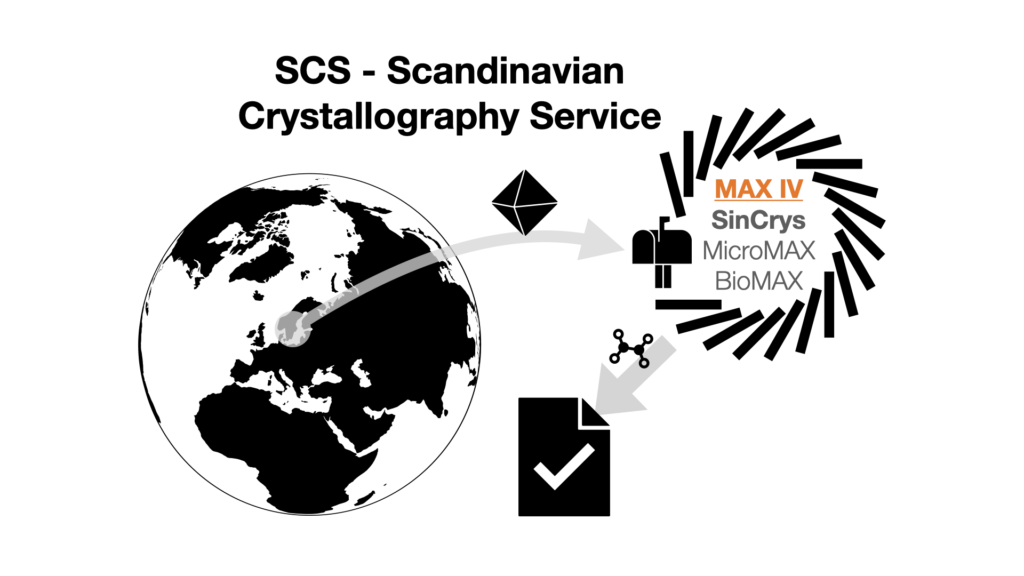First Light is expected in 2026!
Single crystal X-ray diffraction is the preferred technique to solve the atomic structure of a crystalline material. It is now a routine technique in many research laboratories, however, the limited flux, spectral purity and focusing ability of a lab-source severely limits the size and quality of the crystals that can be measured. Moreover, many materials do not grow crystals that are large enough to be studied in-house. Synchrotrons can close this gap; however, they are not commonly used for routine small molecule crystallography due to the additional technical expertise required and long lead times in the proposal-based access policy.

The SINCRYS project is funded by the ‘Nationalt Udvalg for Forskningsinfrastruktur’ (NUFI) under the Danish Ministry of Education and Research and the Novo Nordisk Foundation. The project was started on the 1st of January 2022, with the aim of building a small molecule single crystal diffractometer as a side branch to the DanMAX beamline at MAX IV. SINCRYS is headed by Aarhus University and is performed in collaboration with MAX IV (Lund University). The purpose of the instrument to acquire high resolution 3D atomic structure data of crystals with dimensions of just a few micrometres. Due to the fundamental nature of the derived structural information, the instrument will serve an extremely broad research community in academia as well as industry and spans from bioscience and pharmaceutical sciences across chemistry, materials and geoscience to solid state physics. Exploration of new materials is indispensable e.g., for attaining sustainability, and continuous materials development is essential for maintaining a competitive Scandinavian industry. The instrument will expand the available techniques at MAX IV and complement the BioMAX and MicroMAX beamlines where the focus is on high-throughput macromolecular crystallography. SINCRYS will be tailored for smaller unit cells commonly found in organic molecular crystals, inorganic materials and hybrid organic-inorganic compounds.
Single-crystal X-ray diffraction is a routine technique nowadays and the focus of the instrument will be on high-throughput solutions, offering as much automation from start to end as possible. The instrument will feature an unprecedented flux tailored for general single-crystal sciences with the aim to maximise flux in a 5 x 5 µm area at the sample position (defocusing option up to 100 x 100 µm, FWHM). This will allow the study of micro crystals with sizes in the range of 2 – 10 µm (or larger) and at energies in the range of 20 – 23 keV. It will be explicitly designed to enable a fast acquisition of crystal structures as well as high quality data. The degree of autonomy ensures optimal conditions to setup a Scandinavian Crystallography Service (SCS), a portal for service crystallography inspired by the successful UK National Crystallography Service.

The layout consists of three major parts, a thin water-cooled C* (111) monochromator (#1) in Bragg geometry that acts as a beamsplitter, a second C* (111) Bragg monochromator (#2) that catches and parallelises the beam over a long translation stage (forming a large-offset double-crystal fixed-exit monochromator) and a transfocator (#3) consisting of diamond compound refractive lenses to focus and shape the beam to the desired size.
With help of the beamsplitter, a small fraction of the synchrotron radiation (the 9th harmonic, ~21.0 keV) from the DanMAX undulator will be diverted to the SINCRYS experimental hutch. The beamsplitter diffracts within a narrow bandwidth with a reflectivity close to 100% and thus effectively depleting the main beam of photons inside the spectral window. The remaining undulator spectrum will be unaffected, consequently both the main- and the side-station will be operable in parallel, however, using different harmonics. When the undulator gap is changed, the energy and the diffraction angle of the diverted beam changes accordingly. The second monochromator crystal will travel along a translation stage to catch and parallelise the beam so that downstream components require only minimal alignment.

The focus in the development of the SINCRYS instrument is on high-throughput solutions, offering as much automation of the journey from crystalline sample to solved structure as possible. This high degree of automation ensures optimal conditions to setup the Scandinavian Crystallographic Service (SCS), a portal for service crystallography inspired by the successful UK National Crystallography Service (www.ncs.ac.uk). Here, both academic and industrial researchers can order services that range from sample mounting and data collection to structure solution and refinement. Availability of a one-stop-shop akin to SCS will lower the threshold for accessing single crystal diffraction at a synchrotron and is expected to make the technique available to a much wider and more diverse community. It has the potential to eventually provide a home for Scandinavian research efforts. SCS can be contacted on scs@maxiv.lu.se

